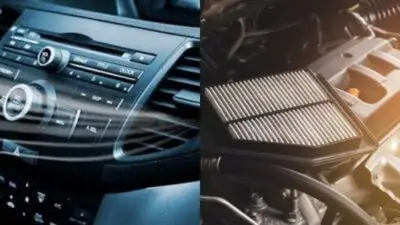
A well-maintained HVAC system ensures comfort, reduces energy costs, and extends the lifespan of the unit. Whether it’s the peak of summer or the dead of winter, keeping your heating, ventilation, and air conditioning system running efficiently is crucial for a comfortable home environment. If you’re considering component upgrades, using high-quality parts such as a rotary AC compressor can enhance system performance and longevity. Many homeowners overlook regular maintenance, which leads to costly breakdowns, poor air quality, and higher utility bills.
Fortunately, by implementing a few simple practices, you can improve your system’s efficiency and avoid unexpected repairs. From regular cleaning to professional inspections, proactive maintenance keeps your HVAC system in optimal condition all year long.
Change Your Air Filters Regularly
One of the most overlooked yet essential maintenance tasks is changing the air filter. A clogged or dirty filter restricts airflow, forcing the system to work harder to circulate air. This increases energy consumption and puts unnecessary strain on your HVAC components, leading to premature wear and tear.
Air filters should typically be replaced every 30 to 90 days, depending on household factors such as pet dander, dust, and indoor air quality. If you have allergies or live in an area with high pollen levels, changing the filter more frequently improves efficiency and reduces allergens in the air.
Keep Your Vents and Registers Clean
Dust and debris accumulate in air vents and registers, blocking airflow and reducing HVAC performance. Regularly cleaning vents ensures that air circulates freely throughout your home, preventing the system from overworking.
Vacuuming your vents every few weeks removes dirt and dust buildup, while a deeper cleaning once or twice a year helps maintain efficiency. Plus, ensure that furniture or curtains are not blocking any vents, as this disrupts proper airflow and temperature distribution.
Schedule Professional HVAC Maintenance
While DIY maintenance is important, professional inspections and tune-ups are crucial for long-term efficiency. HVAC technicians check for issues such as refrigerant leaks, worn-out components, and system inefficiencies that may not be visible to the average homeowner. If your system is experiencing uneven cooling, unusual noises, or poor airflow, a professional can assess the problem and recommend necessary repairs, such as air conditioning repair in Dallas or elsewhere to restore efficiency. Scheduling an annual inspection before the heating or cooling season ensures that your system runs smoothly when you need it most.
Adjust Your Thermostat for Maximum Efficiency
Using your thermostat wisely helps reduce energy consumption and prolongs the life of your HVAC system. Setting your thermostat a few degrees higher in the summer and lower in the winter significantly lowers your energy bills without sacrificing comfort.
A programmable or smart thermostat makes temperature adjustments automatically, optimizing energy use based on your schedule. Some models even offer remote access, allowing you to control your home’s climate from your smartphone. This simple upgrade enhances comfort while reducing strain on your HVAC system.
Keep Your Outdoor Unit Free of Debris
The outdoor unit, also known as the condenser, plays a critical role in heat exchange. Leaves, dirt, and debris can obstruct airflow, causing the system to work harder and operate less efficiently.
Regularly inspect and clean the area around the condenser, ensuring at least two feet of clearance. Trim nearby bushes and remove fallen leaves or debris to promote proper ventilation. Also, rinsing the unit with a garden hose once a month helps remove dirt buildup and enhances performance.
Seal and Insulate Ductwork
Leaky or poorly insulated ducts cause significant energy loss, forcing your HVAC system to work overtime. Up to 30% of conditioned air can escape through leaks, gaps, or improperly sealed ductwork.
Inspect your ducts for any visible damage and seal leaks using specialized duct tape or mastic sealant. Adding insulation to exposed ductwork, especially in attics or basements, helps maintain a consistent indoor temperature and improves overall efficiency.
Reduce Strain by Using Ceiling Fans
Ceiling fans work in conjunction with your HVAC system by improving air circulation and reducing workload. In the summer, setting ceiling fans to rotate counterclockwise helps distribute cool air more efficiently, allowing you to set your thermostat a few degrees higher.
In the winter, reversing the fan direction pushes warm air downward, reducing the need for excessive heating. This simple adjustment minimizes HVAC strain while maintaining a comfortable indoor environment.
Upgrade to Energy-Efficient HVAC Equipment
If your HVAC system is more than 10 to 15 years old, it may be time for an upgrade. Older systems consume more energy and require frequent repairs, making replacement a more cost-effective option in the long run.
Modern HVAC systems are designed with energy-efficient features such as variable-speed motors, improved insulation, and smart technology integration. Upgrading to an ENERGY STAR® certified unit can lower your energy bills and provide more consistent heating and cooling throughout your home.

Proper HVAC maintenance is the key to an energy-efficient, long-lasting system. By changing air filters, keeping vents clean, scheduling professional inspections, and using smart thermostat settings, homeowners can improve performance while reducing energy costs.Taking a proactive approach to HVAC care not only extends the lifespan of your unit but also ensures a comfortable indoor environment year-round. Small, consistent efforts go a long way in keeping your heating and cooling system running efficiently.
- 0shares
- Facebook0
- Pinterest0
- Twitter0



